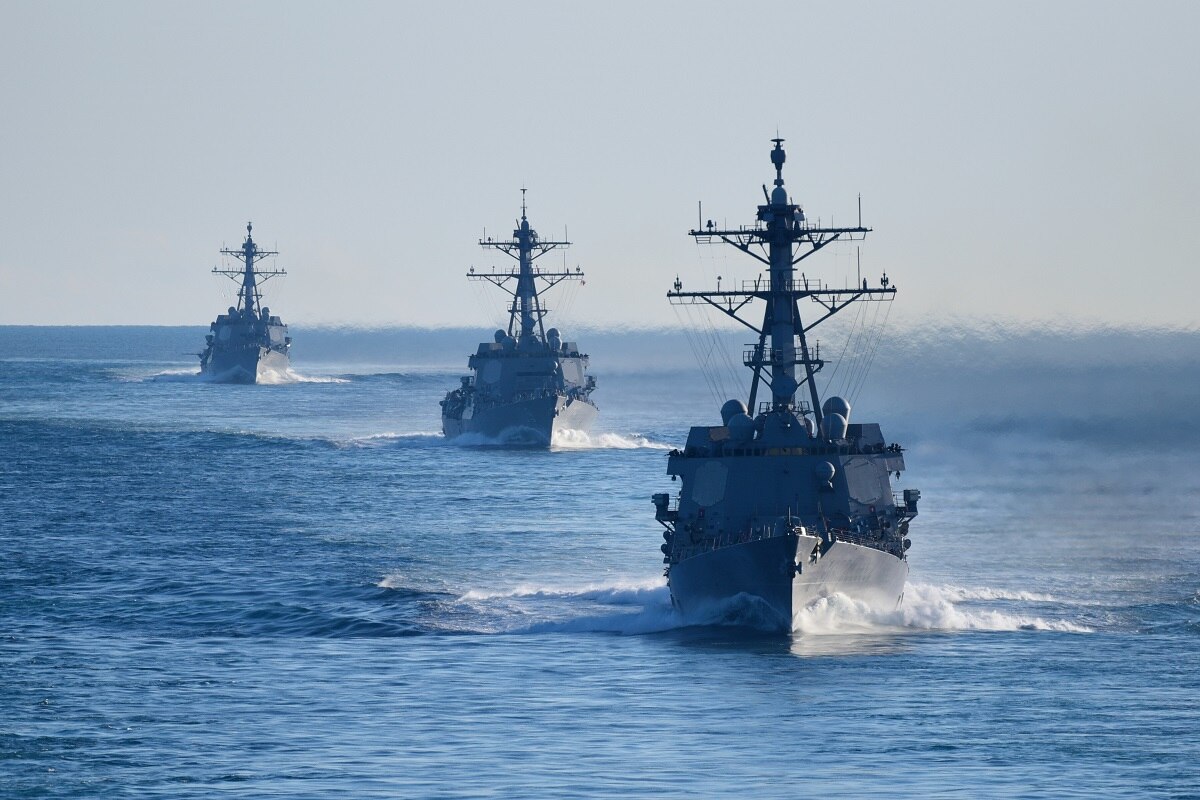Current advice on Covid-19 encourages maintaining social distance; it cautions us to avoid large gatherings of people, especially in tight spaces for prolonged periods of time. So what do you do if you’re in the Navy assigned to a ship or submarine where conditions are exactly those health officials advise against? As Bryan Clark, who heads the Center for Defense Concepts and Technology at the Hudson Institute and is a retired Naval submarine officer puts it, “It’s almost impossible to prevent illnesses from getting around the ship, so we’ve sort of just become habituated to it.”
That sort of thinking had to be adjusted quickly though when Covid-19 struck in 2020, but not before the Navy learned some hard lessons. In March of that year, shortly after the USS Theodore Roosevelt had left Vietnam, three sailors tested positive for coronavirus. Even though the infected individuals were immediately removed from the aircraft carrier, when all was said and done, nearly a quarter of the 4,800 crew members on board were ill. One sailor eventually died.
The carrier docked in Guam and quarantined all its crew in local hotel rooms thus putting an important Naval asset temporarily out of commission and a local community in danger. The problem escalated when the Roosevelt’s captain was fired for writing a memo requesting support in disembarking and quarantining sailors that was leaked to the press. To make matters worse, then-acting Navy Secretary, Thomas Modly, fired the captain for the leak and visited the carrier to address the crew in a speech in which he criticized the captain, sometimes profanely, over the ship’s loudspeakers. Because of the situation, Modly resigned from his position.
The Navy, however, has quickly recovered from this early incident by quarantining crews for two weeks before they are allowed to deploy, by extending those deployments to avoid turnover in crew that might introduce illness, and by cancelling port calls where crew members might be exposed to the virus. They also instated mask requirements and imposed restrictions against visiting bars and restaurants with heavy career-ending penalties.
This has, of course, created unavoidable negative consequences. Because ships are not allowed to go into ports of call, they can’t undergo routine maintenance which means the condition of vessels has deteriorated. The longer deployments combined with a lack of shore-leave has also stressed crew members and taken a toll on morale.
The measures have nonetheless seemed to work, and sailors are now seeing relief at hand as the Navy has undertaken an aggressive vaccination campaign against Covid. As of early March, the Navy had administered nearly 416,000 doses of the vaccine, including to 175,000 sailors.
A recent incident illustrates the difference in the efficacy of the Navy’s measures. In February, two ships operating independently in the Middle East, the USS San Diego and the USS Phillipine Sea, suspected cases of Covid on board. Immediate testing revealed about 20 cases between the two vessels, and all infected sailors as well as those in close contact were isolated. All crew members were quarantined onboard so that there was no risk of spreading the virus. By the end of February, both ships’ crews were offered vaccinations and most had received a first dose by early March.
Such quick and thorough measures combined with the Navy’s vaccination campaign must be paying off. Recent data from Johns Hopkins University shows that the Navy’s Covid death rate of 1.59 per 1,000 cases is well below the national average of 18.15 deaths per thousand. As the rest of the country catches up, the Navy hopes to return to more normal operations, with, of course, a greater sense of awareness of the ongoing threat of the disease. With new stringent protocols in place and the ability to rigorously administer vaccines, the hope is that the new normal will be smooth sailing.

